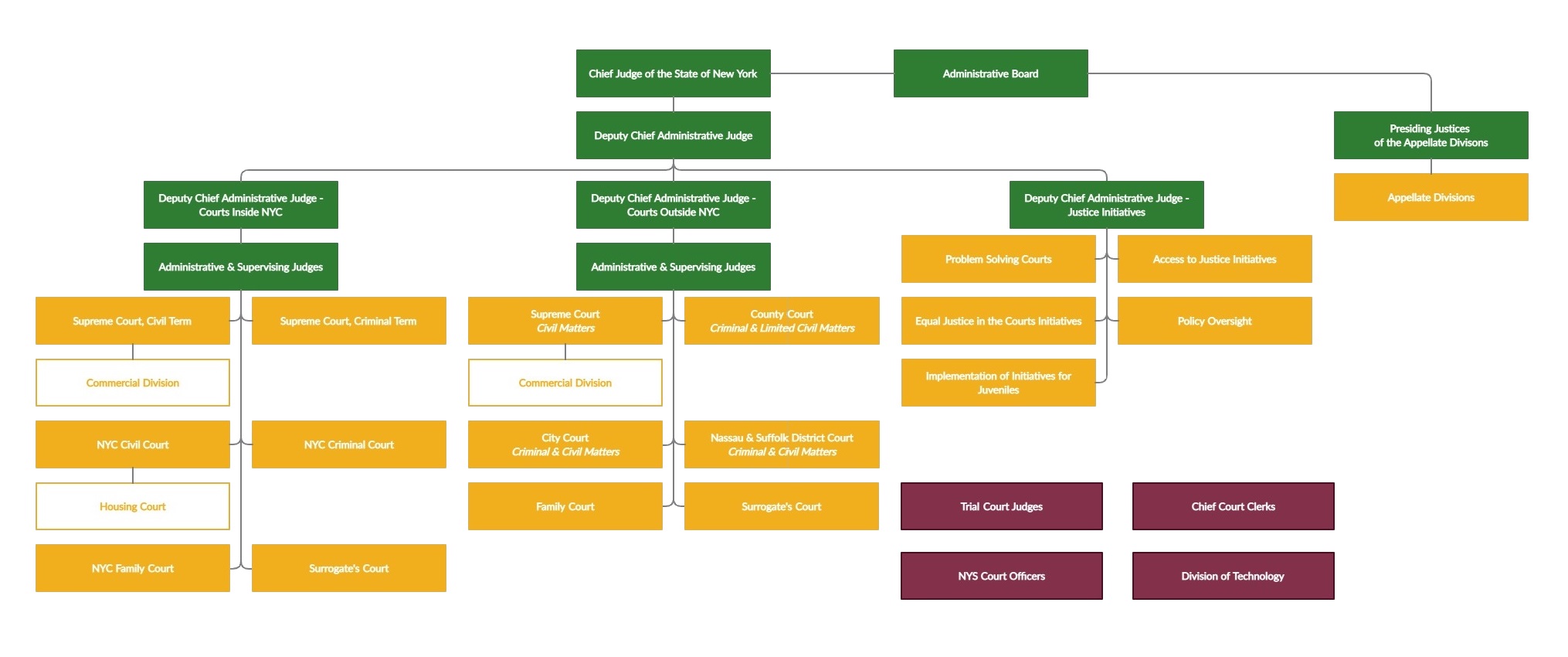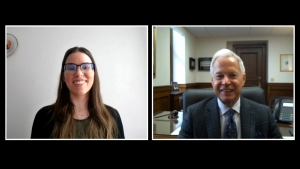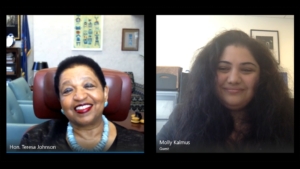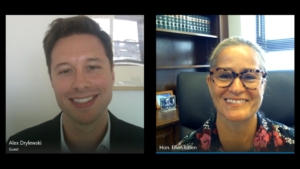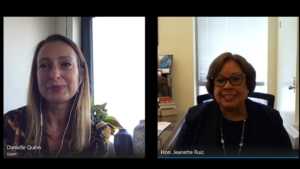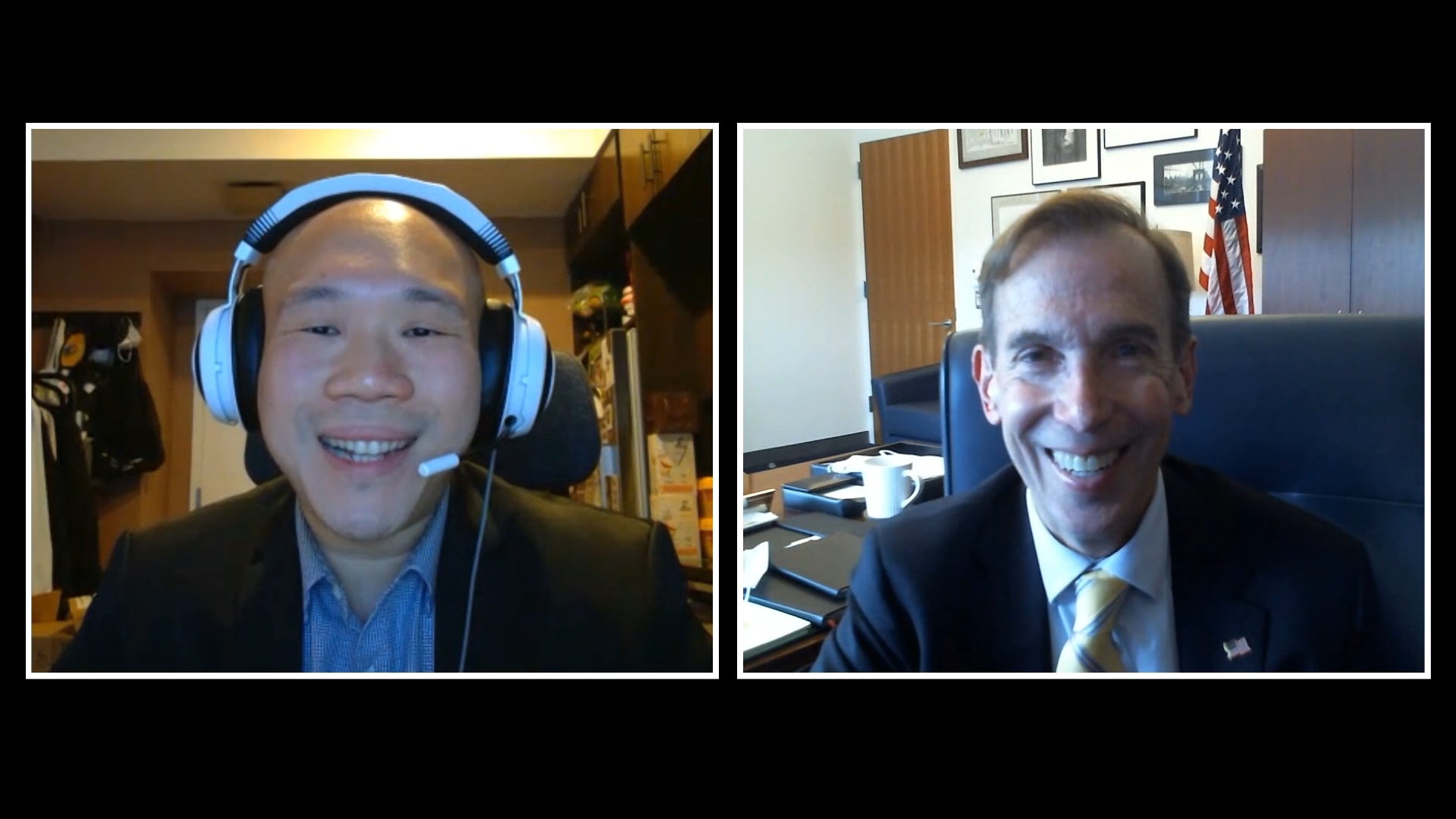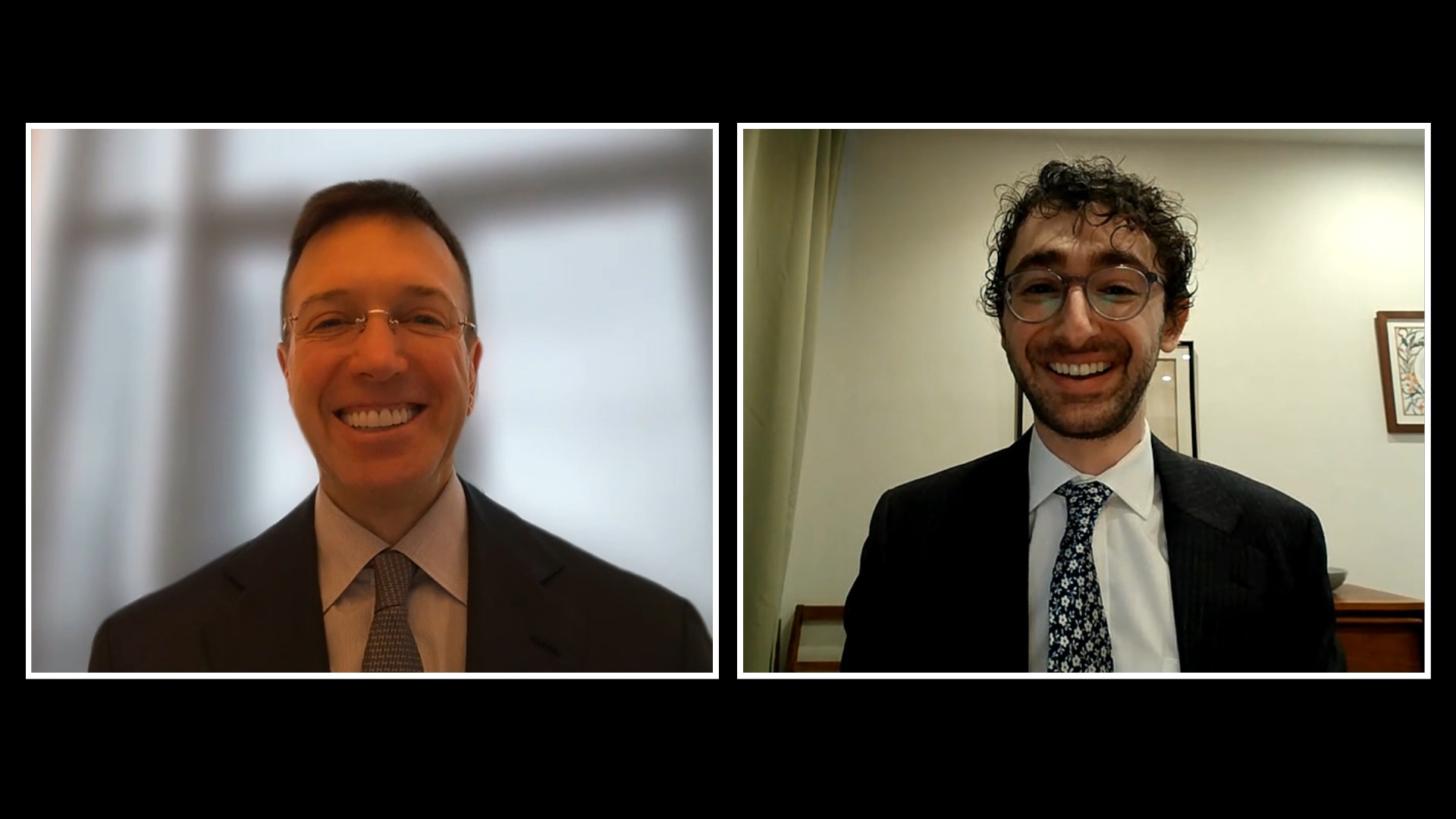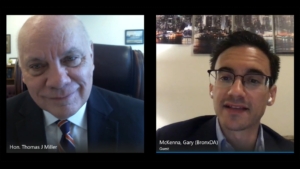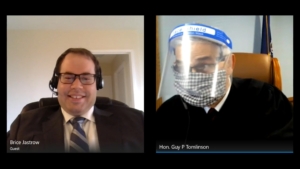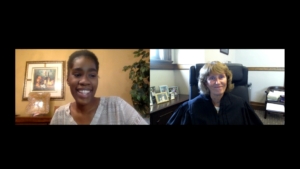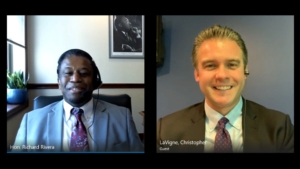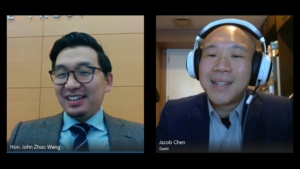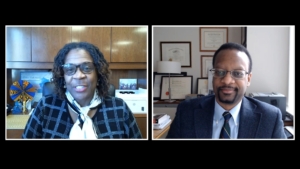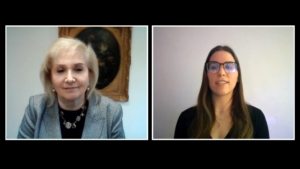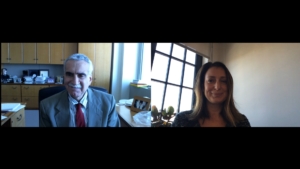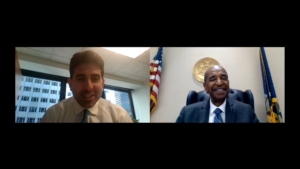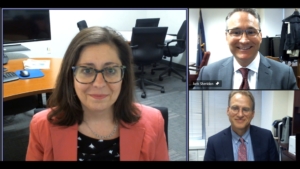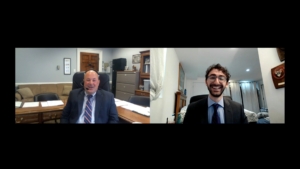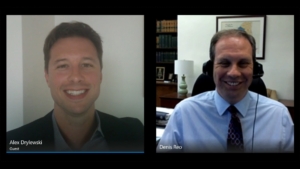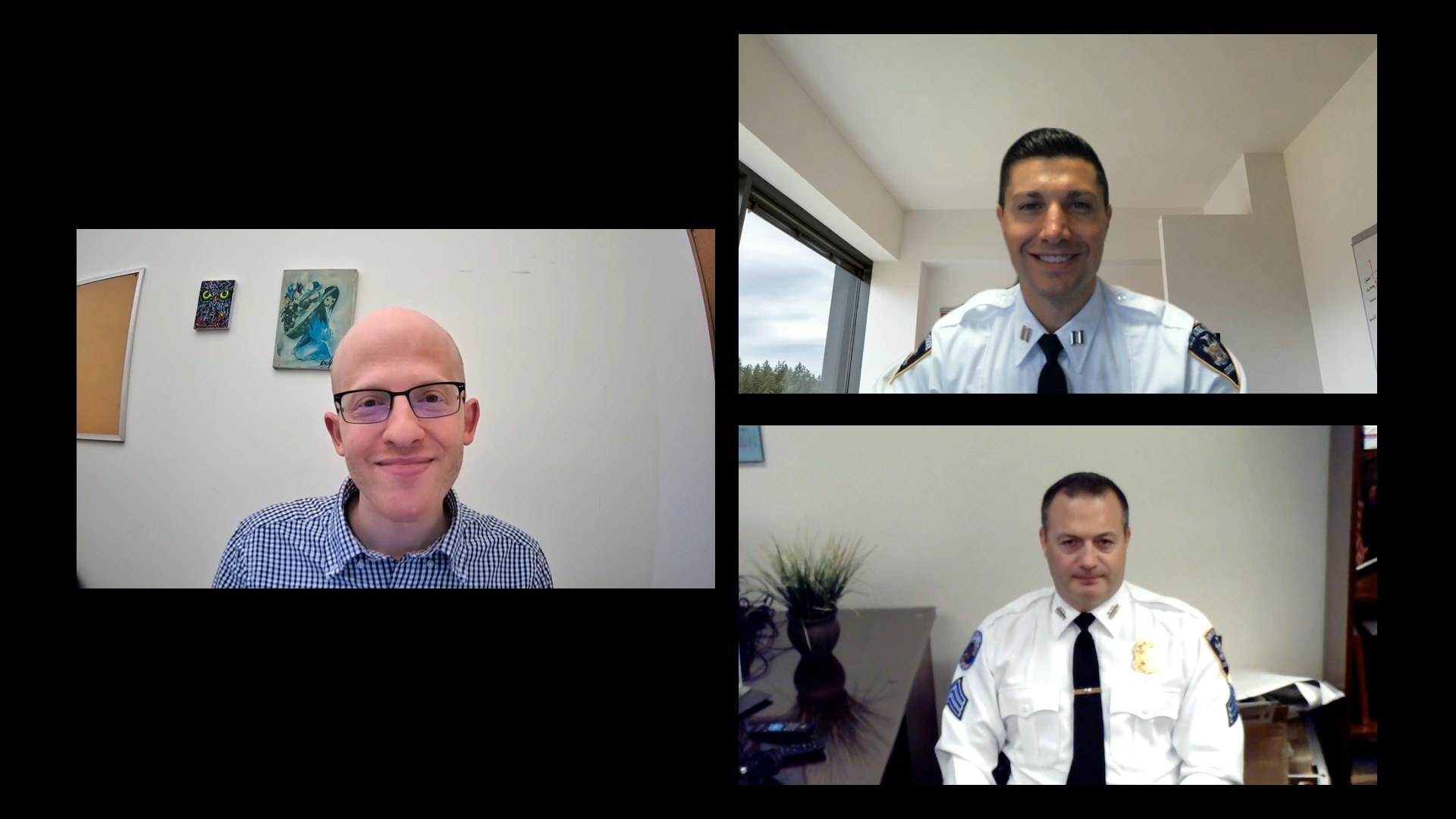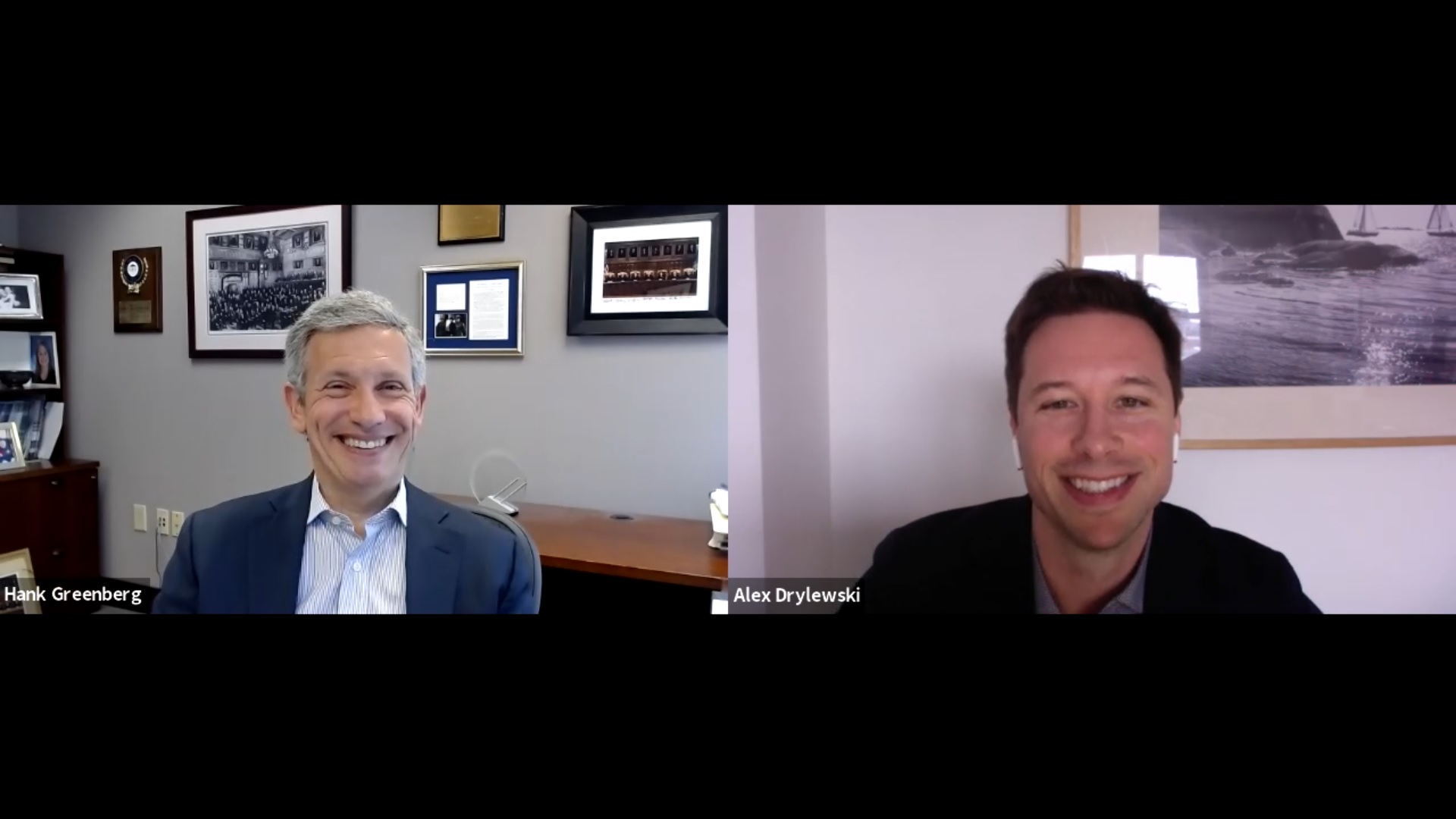THE COURTS NEVER CLOSED
Administrative Structure of the New York State Unified Court System
This chart of the administrative structure of the New York State Unified Court System was adapted to help illustrate this project. The full administrative structure of the Court System is available on nycourts.gov.
Housed on this site are the individual recordings of judges and court personnel. They provide a broad sweep of experiences across New York State. Focusing on trial judges, court clerks, court officers, and technology staff, these interviews use personal recollections to paint an inspiring picture of how the New York State courts pivoted quickly to establish virtual operations, reconfiguring traditional processes and relying on new and creative solutions to keep the courts open and ensure access to justice in the midst of the public health crisis. Also addressed is the careful planning and preparation that went into the partial resumption of in-person proceedings, including retrofitting many courthouses and courtrooms and implementing extensive safety measures and protocols to safeguard the health of everyone who works in or uses our courthouses.
How each interview subject personally adjusted to the unexpected arrival of the pandemic and responded to the challenges they faced in their professional lives and workplaces is a compelling story.
Key administrators, including the Chief Judge and Chief Administrative Judge, provide remarkable insight into the inner workings of the court system during this period, creating a fuller view of the decisions made and the impact of those decisions on the people served.
What emerges from these interviews is a realization that the pandemic has set the New York courts on a new path that will incorporate the benefits of virtual proceedings and remote services into its permanent operating model. What is equally clear, however, is that technology cannot supplant the human element. Face to face interaction will always be indispensable to the delivery of justice in our courthouses. The answer for the future, it seems, will be a blend of the old and the new.
Judges
- Chief Judge supervises the NY Court of Appeals and oversees the work of the Unified Court System.
- Chief Administrative Judge oversees the day-to-day administration and operation of the statewide court system.
- Presiding Justices oversee the operations of their respective Appellate Division courts as well as sit on panels of appeal.
- Deputy Chief Administrative Judges are responsible for overseeing the day-to-day operations of the trial level courts. Additionally, the Deputy Chief Administrative Judge for Justice Initiatives is tasked with ensuring meaningful access to justice for all New Yorkers.
- Administrative Judges oversee operations for their particular courts. Additionally, they may also sit on the bench and decide cases.
Courts
The courts listed below do not represent a comprehensive list of all courts in the New York State Unified Court System. Instead, they provide a sampling of those represented in Dispensing Justice from a Distance, and are intended to orient the user of this archive with information about the work of the represented courts. For more information about the full structure of the New York State Unified Court System, please visit nycourts.gov.
- Appellate Divisions resolve judgements or orders of the superior court of original jurisdiction in civil and criminal cases and review civil appeals taken from the Appellate Terms and the County Courts acting as appellate courts.
- Criminal Courts handle misdemeanors (crimes punishable by fine or imprisonment of up to one year) and other lesser offenses. They also conduct arraignments and preliminary hearings for felonies (crimes punishable by imprisonment of more than one year).
- Family Courts handle most cases involving children and families. These cases include: child abuse and neglect, adoption, custody and visitation, domestic violence, guardianship, juvenile delinquency, paternity, person in need of supervision, and child or spousal support.
- Housing Courts handle landlord-tenant matters and cases involving maintenance of housing standards.
- Surrogate’s Courts handle cases involving the affairs of decedents, including probate of wills and the administration of estates and trust proceedings.
- Problem Solving Courts look to underlying issues that bring people into the court system and employ innovative approaches to address those issues. These courts take different forms dependent upon the problem they are designed to address, including: drug, mental health, community, sex offense, and human trafficking courts.
- Commercial Division handles complex commercial cases as a part of the Supreme Court of New York State. The caseload is particularly demanding.
Court Staff
- Chief Clerks assist the local Administrative Judges in carrying out their responsibilities for supervising the day-to-day operations of the State’s trial courts.
- Court Officers are charged with providing law enforcement, security services and maintaining order within court facilities statewide.
- Division of Technology provides information processing and technology services for the court system, including applications programming, systems analysis, user training, and computer maintenance.
For accuracy and user-friendly navigation, some interviews appear in more than one category. Judges who serve in an administrative or supervising capacity are catalogued both with the courts they serve and as administrators. Judges who sit on multiple benches are catalogued in all the courts in which they serve.
To open an individual interview page, click on the image.
Navigate by:
Chief Judge & Chief Administrative Judge
I would hope that [people reviewing the NYS court system’s response to COVID-19] would find that the leadership was strong, responsive, effective, and most importantly compassionate and understanding of the needs of everyone, and that they would recognize that the judges and the professional staff…stood firm for the rule of law.
Hon. Janet DiFiore, Chief Judge of the State of New York and New York Court of Appeals
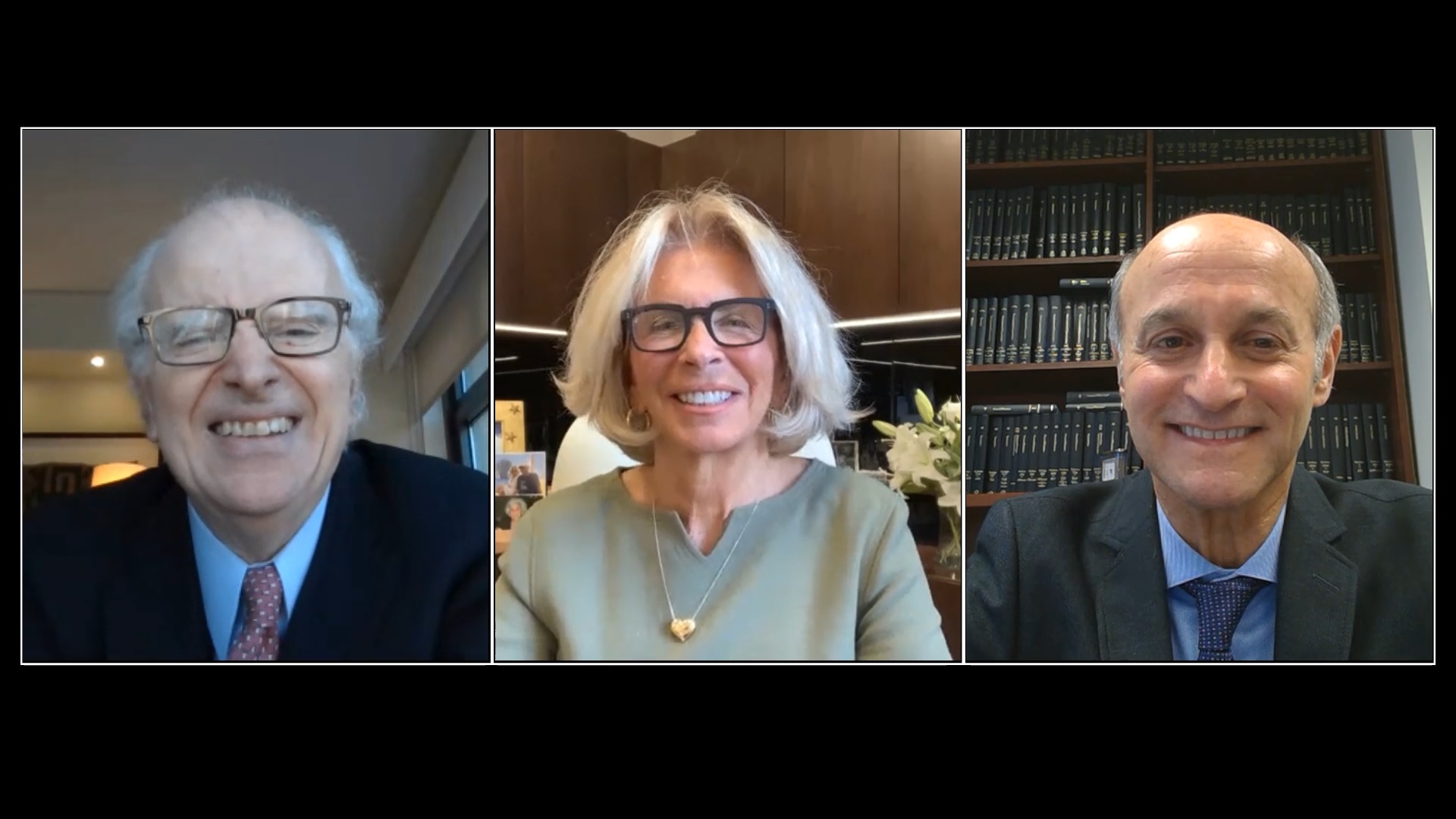
Interview with Hon. Janet DiFiore, Hon. Lawrence K. Marks, & Hon. Jonathan Lippman
Presiding Justices of the Appellate Divisions
We never stopped working in the appellate courts. The work continued. There was no point in time where everything was just shut down and mothballed.
Hon. Gerald J. Whalen, Presiding Justice of the Appellate Division, Fourth Department
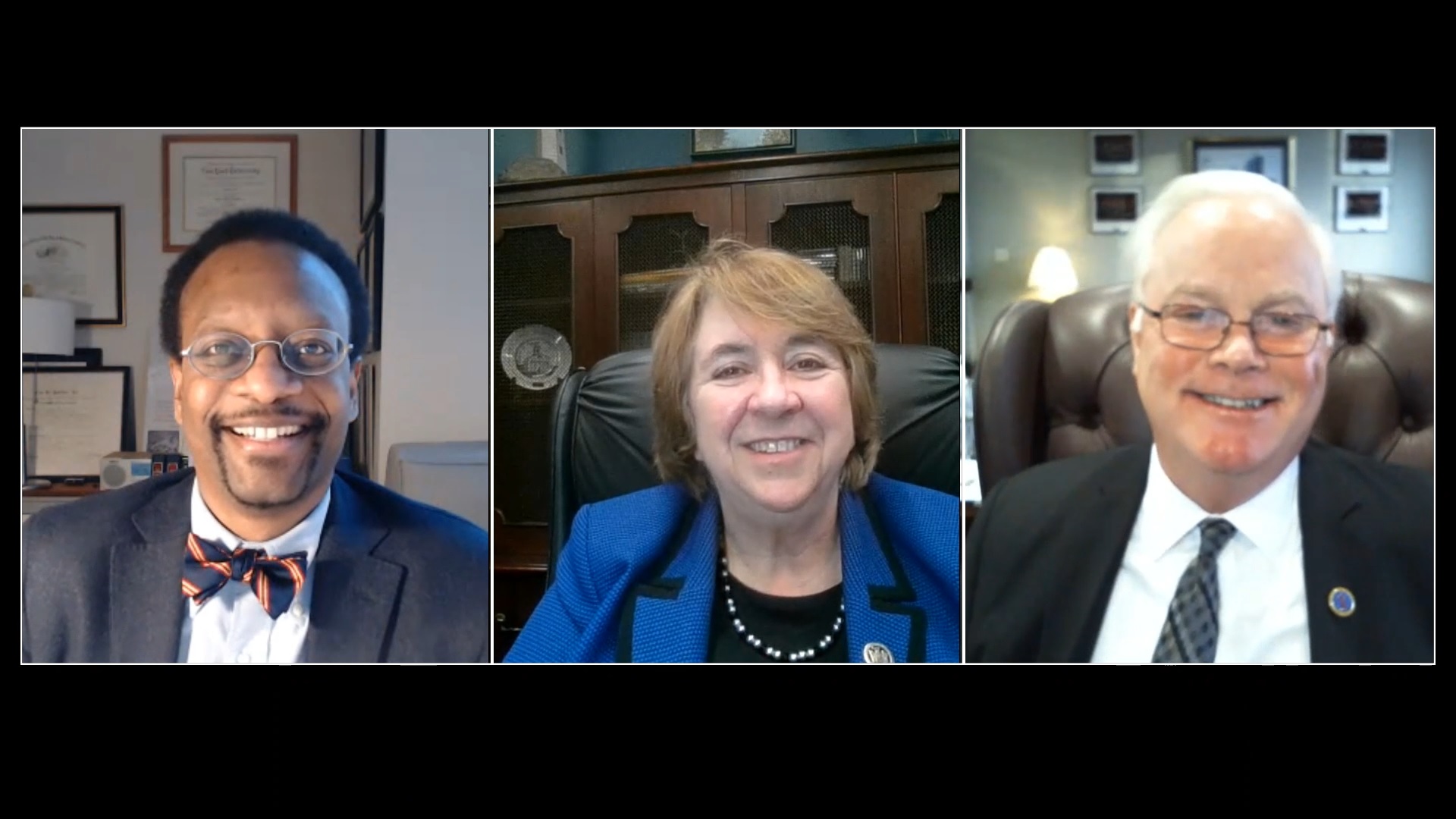
Interview with Hon. Elizabeth A. Garry, Hon. Gerald J. Whalen, & Prof. Troy A. McKenzie
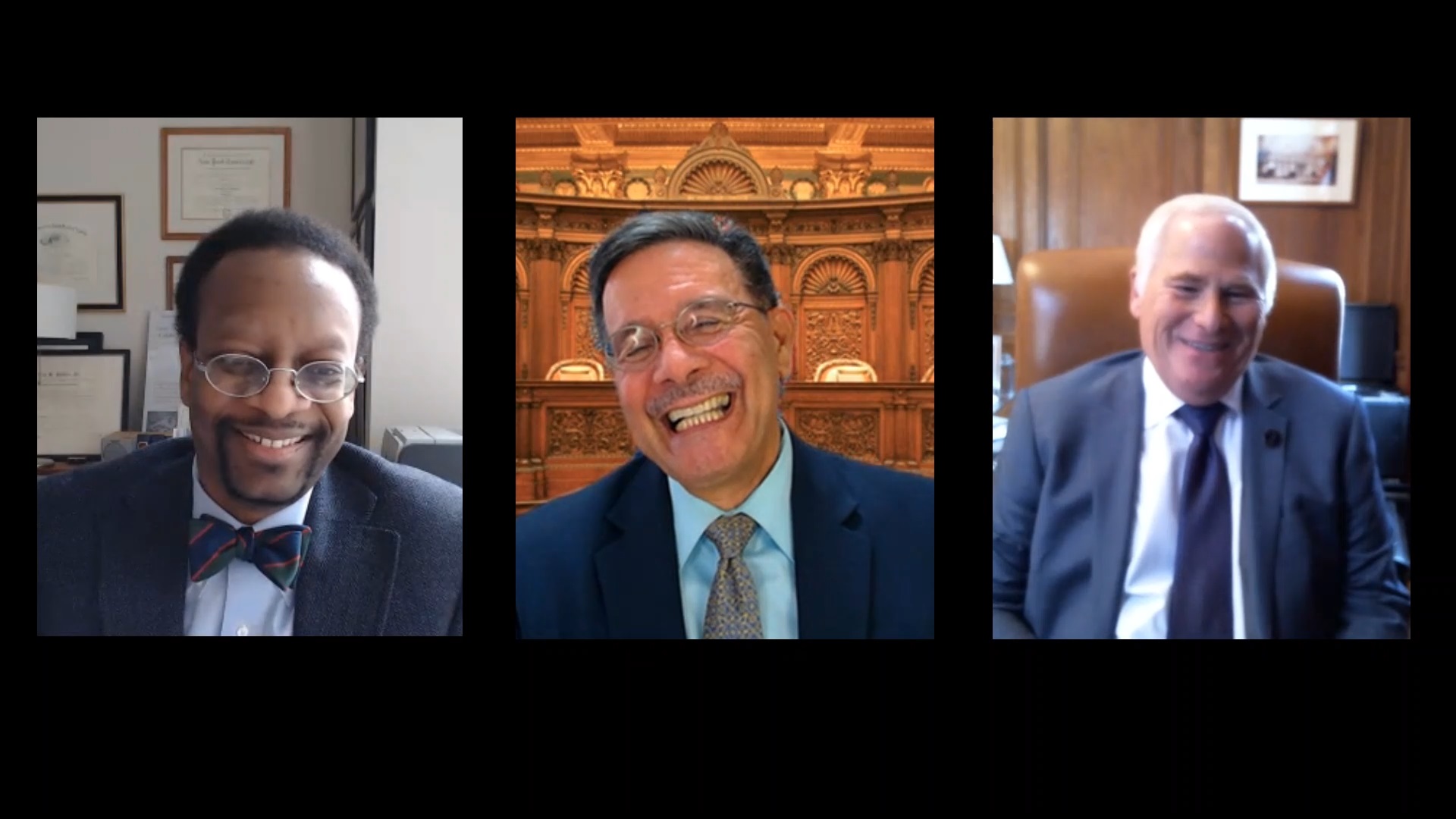
Interview with Hon. Rolando T. Acosta, Hon. Alan D. Scheinkman, & Prof. Troy A. McKenzie
Deputy Chief Administrative Judges
The cornerstone of our democracy is the court system. The fact is that we kept it moving on.
Hon. George J. Silver, Deputy Chief Administrative Judge for the New York City Courts
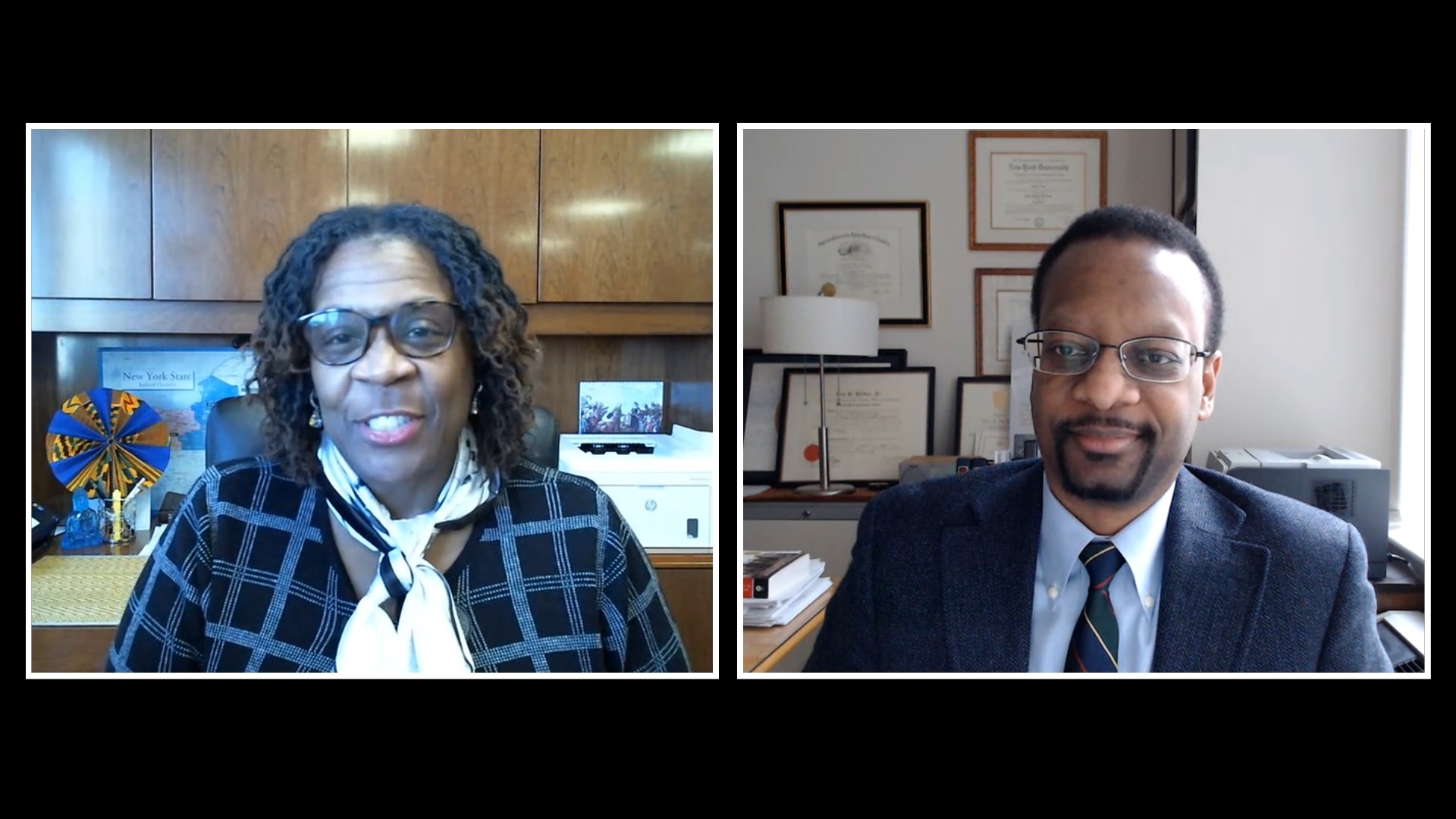
Interview with Hon. Edwina G. Mendelson & Prof. Troy A. McKenzie

Interview with Hon. Vito C. Caruso & Prof. Troy A. McKenzie
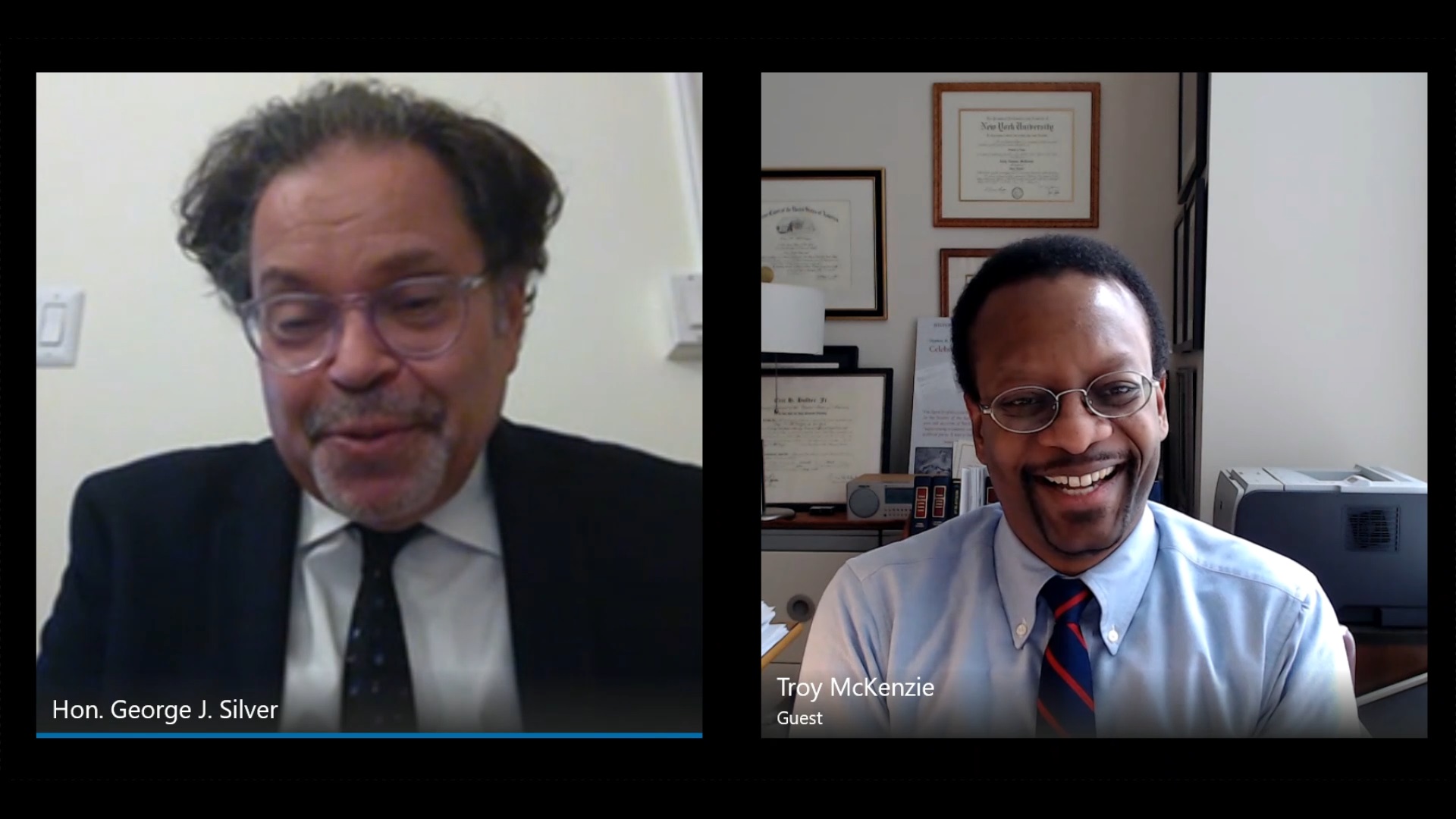
Interview with Hon. George J. Silver & Prof. Troy A. McKenzie
Judges By Court
Administrative & Supervising Judges
It’s going to take a long time to get back to normal, and normal will be very different.
Hon. Jeanette Ruiz, Administrative Judge of the New York City Family Court
Supreme Court of State of New York
Commercial Division
As a Commercial Division Judge, I hear cases literally from all over the world… People come to litigate their disputes in the Commercial Division, New York County because the judges that preside over the matters generally have substantial experience handling these types of complicated transactions.
Hon. Andrew Borrok, Justice of the Supreme Court, Commercial Division, New York County
Criminal Court
The most essential proceedings in Criminal Court are arraignments… We are under a legal mandate to ensure that every individual who is arrested comes before a judge in under 24 hours. That mandate did not change just because we were in this pandemic.
Hon. Tamiko Amaker, Administrative Judge of the New York City Criminal Court
Family Court
Prior to COVID, we would allow litigants to appear by telephone. But the difference is that they had to have a reason…Now it’s different. There’s COVID, and that’s enough of a reason.
Hon. Richard Rivera, Judge of the Albany County Family Court
Housing Court
Justice is not just about being fair on the bench, but it is also about compassion and empathy.
Hon. John Zhuo Wang, Judge of the Housing Part, New York City Civil Court
Surrogate’s Court
As a Surrogate Judge, I’m very mindful of the fact that I’m dealing with people during the worst times of their lives… And now, not only do we have that, but we have this virus…When you take all of that together, it’s very difficult for people right now.
Hon. Brandon Sall, Surrogate of Westchester County
Problem Solving Courts
When we think of COVID-19, we as a society are all in the same storm, but we are not all in the same boat. And the people that are served by our Access to Justice program, and our family justice programs, and problem solving and youth courts—all of them—are in the least secure, leaky boats in terms of COVID-19.
Hon. Edwina G. Mendelson, Deputy Chief Administrative Judge for Justice Initiatives
Court Staff
Chief Clerks
[The clerks] have been amazing… People who have been in the system for 15, 20 years were learning something completely new, and they wanted to learn… [The clerks] really stepped up to the plate.
Hon. Michael Frishman, Judge of the New York County Criminal Court
Court Officers
The court officers here work down at the metal detectors; they make sure people stay six feet away. They’re actually the ones who have their foot or their boots on the ground. They’re taking these temperature checks. They’re honestly the frontline workers.
Hon. JaHarr S. Pridgen, Judge of the Buffalo City Court
Division of Technology
For much of what we do, the routine day-to-day court conferences, virtual technology is the future… I would be shocked if once we’re through this pandemic, if we took a step backwards.
Hon. Lawrence K. Marks, Chief Administrative Judge of the Courts of New York State

